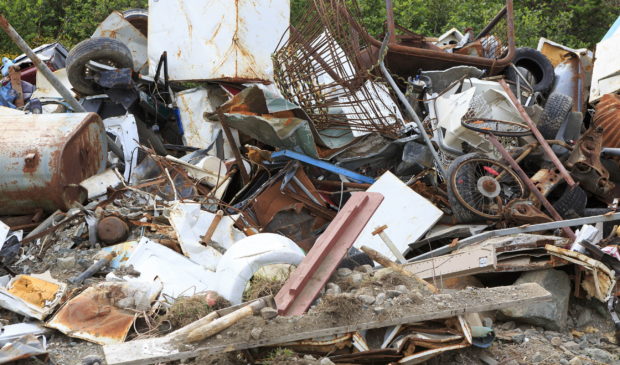Travis County study finds it’s cheaper to prevent than clean up illegal dumping
Monday, March 28, 2022 by
Seth Smalley Travis County’s illegal dumping problem could be solved with a quick fix, a recent study suggests. By spending more on preemptive measures, the county could save money and prevent illegal dumping, thus solving two problems with a single stroke.
At last Thursday’s meeting of the Travis County Commissioners Court, the Institute for Government Innovation at Texas State presented its findings on the problem of illegal dumping in Travis County and potential solutions. In 2018, the county created an interlocal agreement with the on-campus consultancy to locate popular dumping hot spots and ”collection service gaps” and identify the correlations between the two.
“Where there are no haulers, or where collection is not provided by a municipality, there tends to be more illegal dumping,” said Emily Ackland, environmental program manager with Travis County Transportation and Natural Resources. “Not so astonishingly, there was a correlation.”
There are areas outside Austin but within Travis County, where residents have to pay contractors for garbage collection service.
“It is important to note that both individuals and businesses engage in illegal dumping – generally for the same reason – to avoid the expenditure of time and/or money required for proper disposal,” the report notes.
One of the findings in the report is that it was five times more expensive for county taxpayers to clean up illegal dumping than to spend on prevention efforts.
Taking into account accessibility and population, the panel of Texas State presenters recommended installing an additional collection center in the north part of the county, along the Interstate 35 corridor.
Multiple graduate students as well as undergraduates involved with the institute presented to commissioners. “Based on our initial illegal dumping analysis, we were tasked with documenting the illegal dumping reporting and response process, its costs, and identifying alternative strategies to address illegal dumping,” said Matt Pantuso, a grad student at Texas State.
“We found illegal dumping is an issue throughout the county. But the majority of it occurs on the east side by 35,” Ackland told commissioners.
Pantuso went on to detail a online map created by the consultancy, which includes more than 300 recyclable material drop-off locations in Travis County. Users can enter their address and the materials they want to recycle, and find the most convenient drop-off locations.
“Since its launch in February of 2021, the map has had more than 7,500 views with an average of 21 views per day,” Pantuso said.
Commissioner Brigid Shea confirmed with the presenters that signs were being posted at the common dumping sites, and she also wanted to know what enforcement methods were currently being implemented.
Commissioner Ann Howard indicated her interest in organizing community collection events to help clean up illegal dumping sites.
“I think it would be helpful if staff could tease out from the report any particular actions that we might consider that would be useful,” Shea said. “I’m not interested in spending a lot of time on enforcement if it means we end up in the courts and it’s hard to prove.”
The Austin Monitor’s work is made possible by donations from the community. Though our reporting covers donors from time to time, we are careful to keep business and editorial efforts separate while maintaining transparency. A complete list of donors is available here, and our code of ethics is explained here.
You're a community leader
And we’re honored you look to us for serious, in-depth news. You know a strong community needs local and dedicated watchdog reporting. We’re here for you and that won’t change. Now will you take the powerful next step and support our nonprofit news organization?











